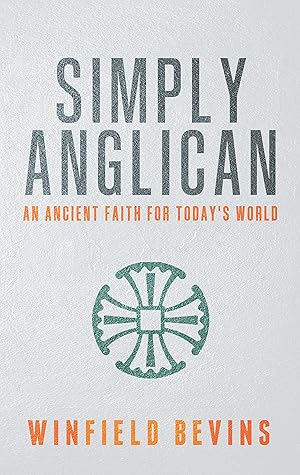More on this book
Kindle Notes & Highlights
Read between
October 23 - October 26, 2022
The truth is, many contemporary people are longing for a faith that was not started yesterday and is not driven by fads or personalities.
(Evangelical, Sacramental, and Charismatic).
We tend to focus on the now at the expense of the eternal.
Our lack of historical awareness can be remedied by opening the pages of church history and returning to the roots of faith that have nourished believers since the time of Christ. Christians are beginning to rediscover that church history has much to teach us about living out the Christian faith.
Augustine became the first Archbishop of Canterbury and established a center for Christianity in Britain.
The Reformation in England has been called “Reformed Catholicism” because it embraced theology of the Reformation while at the same time it retained many of the time-honored practices of the historic Catholic tradition.
the Book of Common Prayer (often referred to as the “BCP” or “Prayer Book”). In 1549, he helped organize the Book of Common Prayer in the English language. Cranmer and a committee of twelve others compiled the Prayer Book from various sources, including ancient prayers of the early church, Catholic and Orthodox liturgies, and private devotions of the Middle Ages. They translated many of these sources into the English language. Later, in June of 1553, Edward VI gave his agreement to Cranmer’s initial Forty-Two Articles of Religion, which would eventually become a foundational document for
...more
We believe in one God, the Father Almighty, maker of heaven and earth…’” As I said the words, there was a dim flicker of hope beneath the layers of exhaustion. I heard my voice blending in with the voices of those around me, saying words that Christians have said for hundreds of years, reaffirming my faith in the Triune God despite my circumstances and despite my feelings. And as the syllables rolled off my tongue, my weary spirit began to revive.” -Emily McGowin1
The mission of the church is to engage a changing world with an ancient faith that is relevant and fresh for each generation. It’s about communicating clearly and calling each generation to the solid foundation of orthodoxy.
Our creeds guard the faith, but they do not limit the leading of the Holy Spirit.
The Anglican church employs the Apostles’ Creed as the statement of faith during baptism and Morning and Evening Prayer, while the Nicene Creed is recited in the service of Holy Communion.
The church never intended for the Articles to be a comprehensive statement of the Christian faith, but originally thought of them as a way to clarify the position of the Church of England against the Roman Catholic Church and also certain continental Reformers.
Anglicans believe doctrine and devotion belong together. While doctrine can seem stuffy, boring, and useless, when grasped personally it becomes surprisingly devotional.
However, there are times when we simply don’t have the words to express ourselves in prayer. When we don’t know how to pray or when we need encouragement to pray, we look to the church. The prayers of fellow Christians can inspire and encourage us whenever we find ourselves at a loss for words, or when our desire to pray is not there. Many prayers and thanksgivings have been recorded and passed down, since the days of the Bible, to be used by others for mutual encouragement.
we learn to pray by praying.
Author Eugene Peterson said, “The Psalms were the prayer book of Israel; they were the prayer book of Jesus; they are the prayer book of the church.”
A. W. Tozer reminded us: “The Bible is not an end in itself, but a means to bring men to an intimate and satisfying knowledge of God, that they may enter into Him, that they may delight in His Presence, may taste and know the inner sweetness of the very God Himself in the core and center of their hearts.”
The current Archbishop of Canterbury, Justin Welby reminds us that “as Anglicans we are both catholic and reformed: committed to a shared life together (our catholicity) yet retaining local autonomy (having nether pope nor curia). Thus we are deeply affected by one another, even though our diverse provinces remain technically independent and autonomous.”
Timothy C. Tennent, president of Asbury Theological Seminary, recently welcomed incoming seminary students by saying, “Welcome to life on the fastest growing mission field in the world: North America.”
While many base their understanding of mission on old Christendom models, Christians needed to rediscover that the mission of the church can only be rightly understood, “if we see it as the work of God who has sent His Son and given His Spirit, as a sharing through the spirit in the obedience of the Son to the Father, as a participation in the spirit who enables us to know God as Father and to confess Christ as Lord, and to wait with assurance and patience for the coming of His Kingdom.”
Five Marks of Mission are: 1.To proclaim the Good News of the Kingdom 2.To teach, baptize and nurture new believers 3.To respond to human need by loving service 4.To transform unjust structures of society, to challenge violence of every kind and pursue peace and reconciliation 5.To strive to safeguard the integrity of creation, and sustain and renew the life of the earth
Anglicanism retains the best of Roman Catholicism (liturgy and tradition) and Protestantism (authority of Scripture and justification).
Many have found in the historic Anglican tradition an oasis in the desert, a river in dry and thirsty land, and a treasure hidden among the clamor of our postmodern society.


